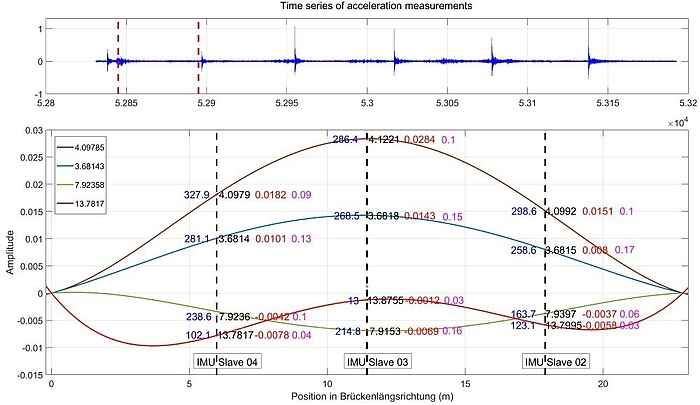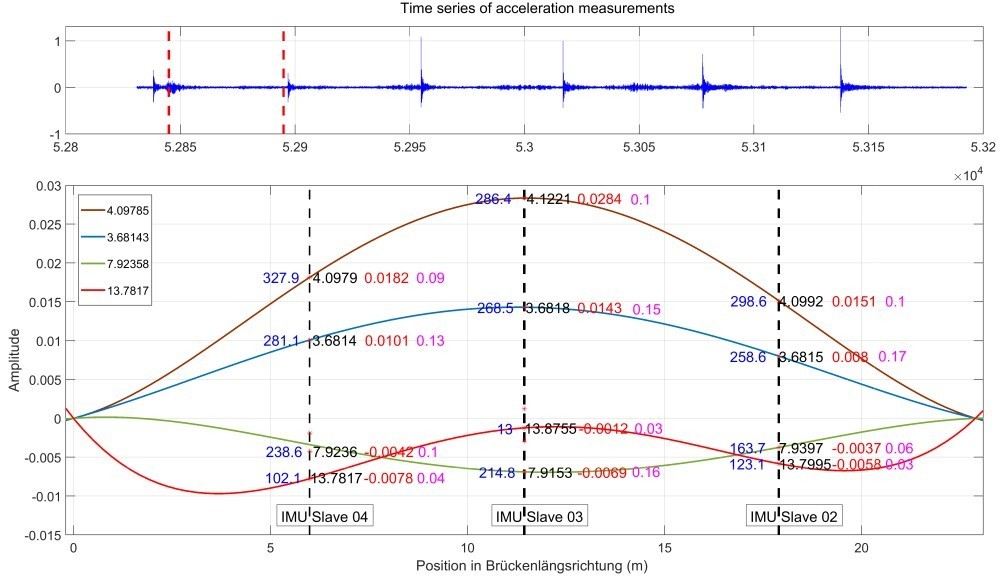Spatio-temporal monitoring of bridge structures using low cost sensors

| Led by: | Ingo Neumann, Jens-André Paffenholz |
| Team: | Mohammad Omidalizarandi, Boris Kargoll |
| Year: | 2016 |
| Funding: | BMWi (Federal Ministry for Economic Affairs and Energy) – ZIM Kooperationsprojekt (Central Innovation Programme for SMEs) |
| Duration: | 09/2016 – 09/2018 |
| Is Finished: | yes |



Figure: Low-cost accelerometer: Mode shapes calculated for different frequencies for the vertical direction (bottom). The texts for each mode shape represents estimated phase shifts (blue), frequencies (black), amplitudes (red) and damping ratio coefficients (magenta) at a specified positions.
Project description
Today, reliable, accurate and cost-effective vibration analysis of aging infrastructures such as bridges has received considerable attention. In this project, the Geodetic Institute Hannover (GIH), Leibniz University Hannover, is collaborating with ALLSAT GmbH, Hannover, to develop a hardware and software low-cost multi-sensor-system (MSS) technology to reach aforementioned goal. The MSS consists of low-cost micro-electro-mechanical systems (MEMS) accelerometers of type BNO055 from Bosch. They are part of a geo-sensor network by mounting at different positions of a bridge structure which is pre-calculated by means of a finite element model analysis. In order to degrade the impact of systematic errors on the acceleration measurements, the deterministic calibration parameters are identified based on the common six-position static acceleration tests using a KUKA youBot in a climate chamber over certain temperature ranges. Next, the calibrated accelerometers are mounted at certain positions to perform measurements at certain time intervals. The time synchronization between multiple sensors is carried out based on the GPS time and by triggering the slave accelerometer sensors from a master accelerometer sensor. To inspect the changes in the global dynamic behaviour of a structure such as natural frequencies, mode shapes (i.e. eigenforms) and modal damping, a damped harmonic oscillation model is employed together with an autoregressive model of coloured measurement noise, which is solved by means of a generalized expectation maximization (GEM) algorithm to achieve a robust, reliable and accurate estimation of frequencies, amplitudes and damping ratio coefficients (i.e. at the accuracy level of millimetre/sub-millimetre for amplitudes and 0.1 Hz for frequencies) (see Figure).






